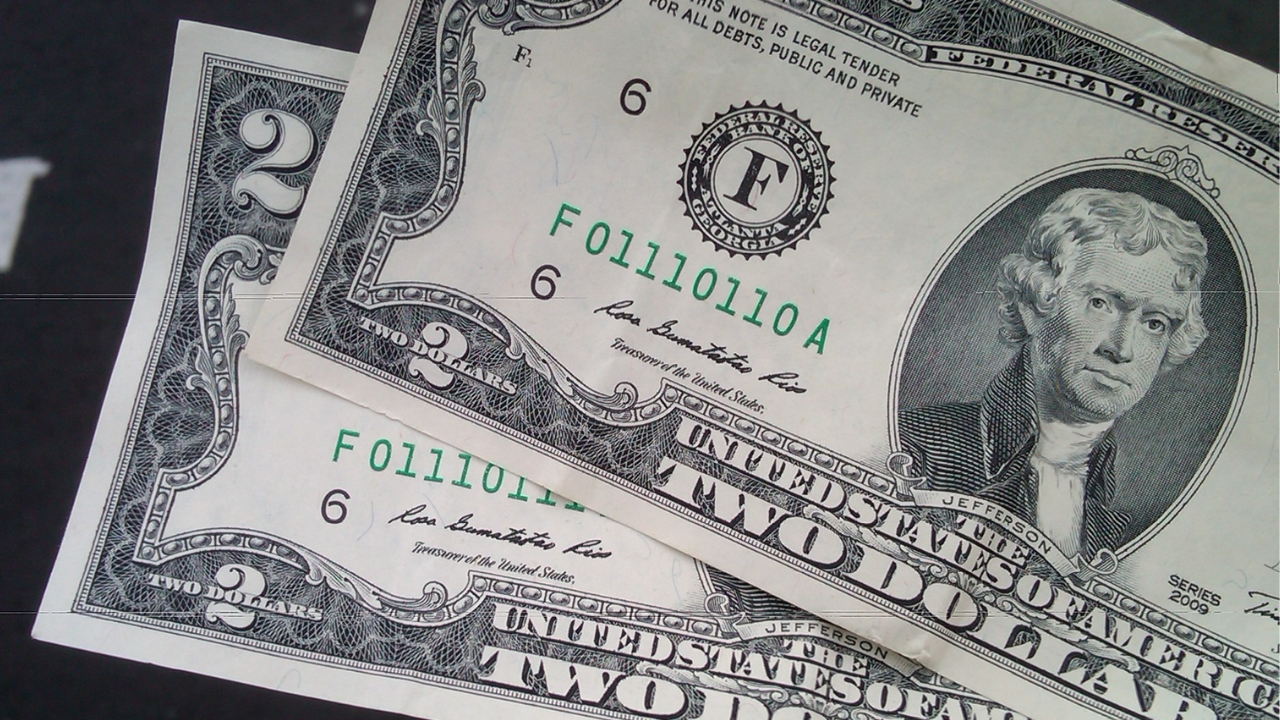Most of us are used to handling $2 bills without thinking twice about their value. After all, they’re still legal tender, so they’re worth exactly $2. But what if you found out that certain $2 bills could be worth thousands—up to $20,000? That’s right—some bills with specific characteristics can fetch a pretty penny among collectors. Here’s what you need to look for if you think you might have one of these rare finds.
Factors That Can Make Your $2 Bill Worth a Fortune
A bill’s value goes beyond just its face value. If you’ve got an older, rare, or well-preserved $2 note, you could be sitting on a small fortune. So, what makes these bills valuable? Three main factors contribute to their worth: serial numbers, age, and condition. Let’s break them down.
Serial Numbers
The serial number printed on the bill is one of the most important factors that can boost its value. It’s not just the number itself—it’s the pattern that matters. For example, a $2 bill from 1976 with a low serial number or unique pattern could be worth up to $20,000 or more (Source: MarketWatch).
But it’s not just about having a low number. Collectors also value specific types of number patterns. For instance:
- Ladder Numbers: These are numbers arranged in a sequence, like 12345678.
- Solid Numbers: These feature repeating digits, like 88888888 (Source: Bankrate).
These unique serial numbers stand out to collectors, and they’re willing to pay big bucks for bills with these rare patterns.
Age and Rarity
The age of a $2 bill can also significantly impact its value. In general, older bills tend to be worth more. For example, $2 bills printed before the 1920s can be worth much more than their face value due to their age and rarity. Limited print runs or bills from specific series can also command higher prices, especially if they’re no longer in circulation (Source: Gene’s Pawn).
Collectors are always on the lookout for bills that are hard to find, and age plays a big role in that search.
Condition Matters
When it comes to selling any collectible item, the condition is everything—and $2 bills are no exception. A worn, folded, or damaged bill won’t fetch nearly as much as one in pristine condition. If your bill has been kept in good shape, perhaps even encased for preservation, its value could be significantly higher.
Collectors will pay top dollar for bills that are well-preserved, and some will even look for bills that are graded as “uncirculated,” meaning they’re in perfect condition and have never been used in transactions.
How to Determine the Value of Your $2 Bill
If you think you’ve found a rare $2 bill, how do you figure out its value? Several factors come into play here. According to collectors and experts, there are four types of value to consider:
- Catalog Value: This is the average price the bill would sell for based on its rarity and condition.
- Purchase Price: The price a dealer is willing to pay for the bill.
- Retail Value: The price a dealer would sell the bill for to a buyer.
- Wholesale Value: The price dealers use when trading among themselves.
These values depend on rarity, condition, and demand in the market. If you’ve got a rare $2 bill, it could fall into one of these higher categories. But remember, it all comes down to what collectors are willing to pay for it at the time.
How to Get Your Bill Valued
If you think you have a valuable $2 bill—or any other rare bill or coin—it’s a good idea to get it professionally valued. You can take it to a pawn shop or find a reputable coin dealer. Some online platforms, like eBay or Facebook groups dedicated to collectors, can also help you gauge its value. For an official evaluation, you can visit websites like the Professional Coin Grading Service (PCGS), which offers certified grading and valuation services for rare coins and bills (Source: PCGS).

Alexander Clark is a financial writer with a knack for breaking down complex market trends and economic shifts. As a contributor to The Daily Overview, he offers readers clear, insightful analysis on everything from market movements to personal finance strategies. With a keen eye for detail and a passion for keeping up with the fast-paced world of finance, Alexander strives to make financial news accessible and engaging for everyone.


